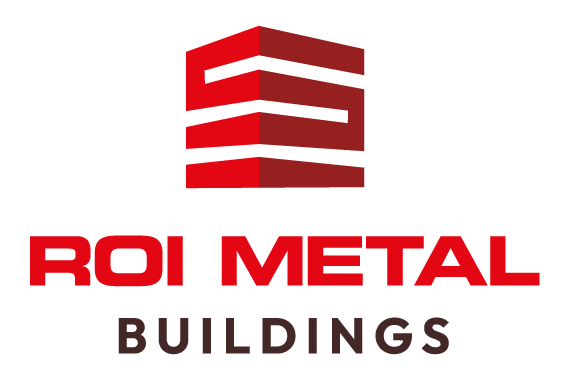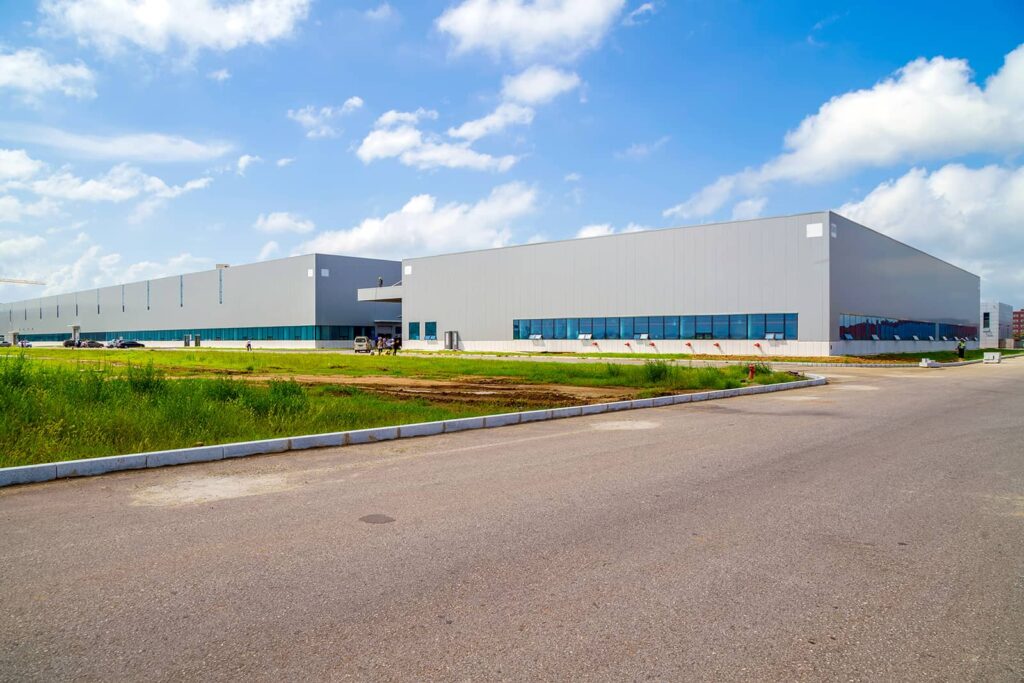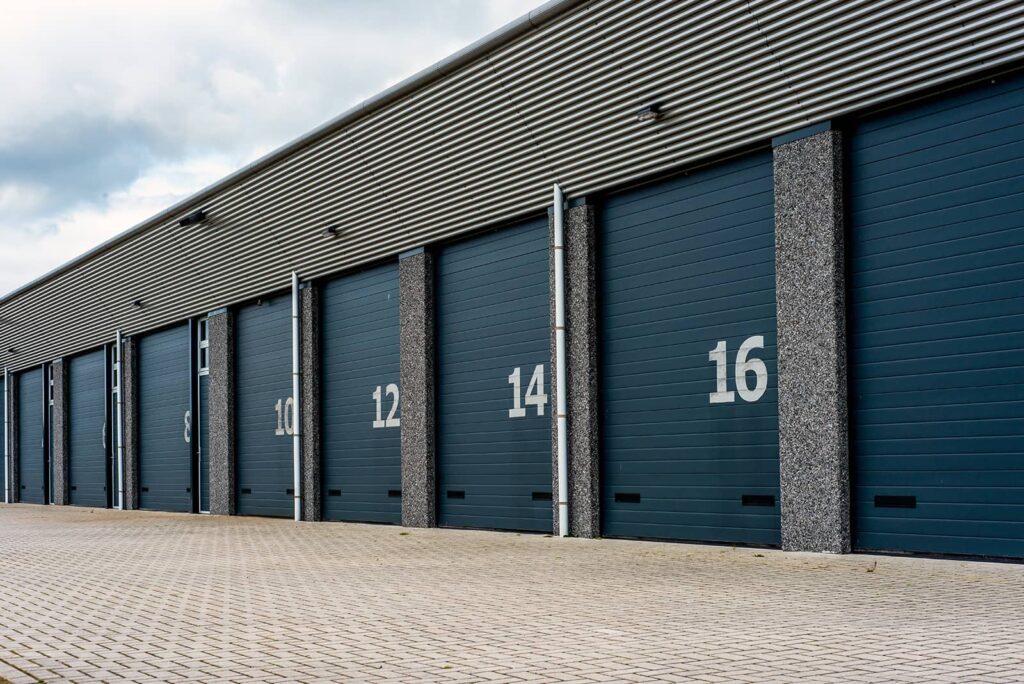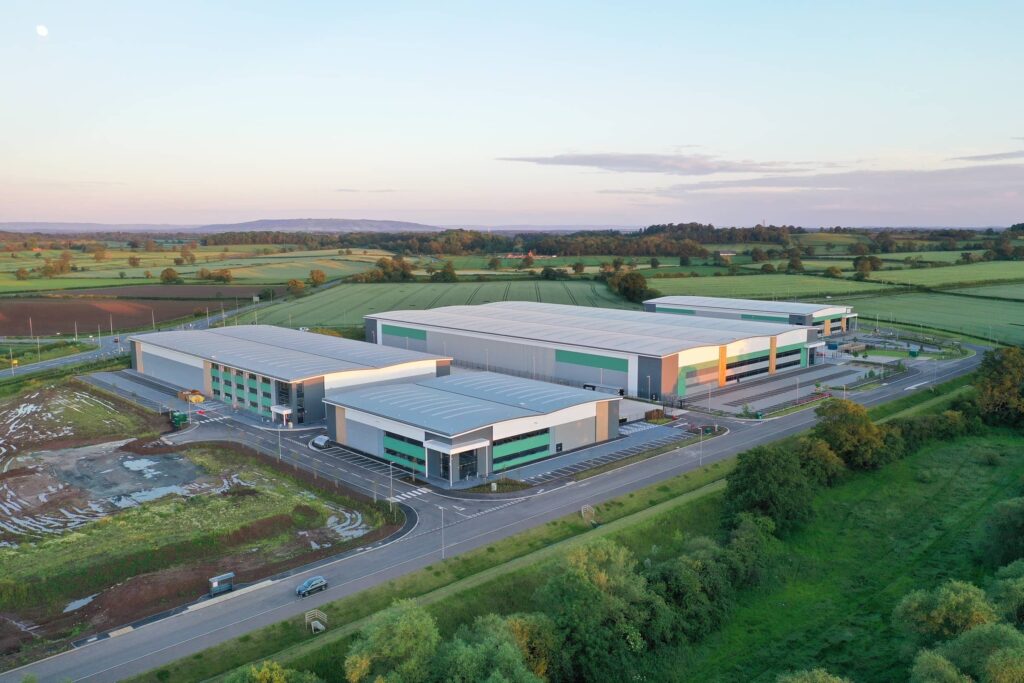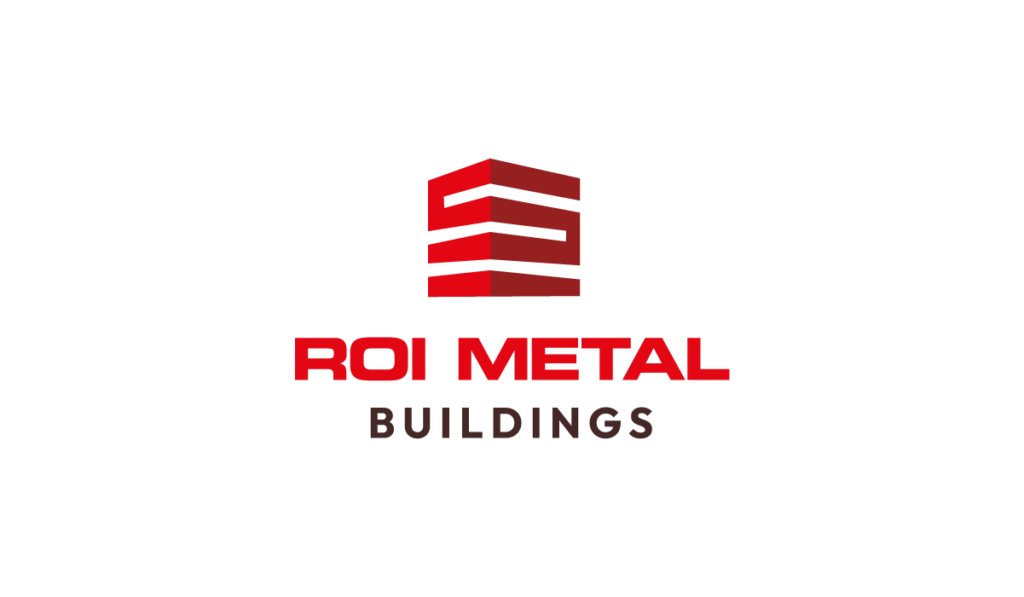Metal buildings, thanks to their steel framework, offer a level of durability and elemental resistance that far surpasses that of conventional stick frame constructions. They stand their ground against harsh weather, fire threats, and pesky pests which wood frames often struggle with. However, it’s not just about strength; metal buildings also offer flexibility in design and customization that might surprise you. With material availability and energy efficiency topping their list of benefits, it becomes apparent why they can be a better choice. Now, let’s dive deep into an in-depth comparison of metal buildings vs conventional stick frame buildings.
Before we begin, just a quick reminder. This is a continuation of an article last week of detailed comparisons between metal buildings and other options. Last week’s article was on Metal Buildings vs Pole Barns.
Metal buildings offer superior strength, cost-effectiveness, and faster construction compared to conventional stick frame buildings. They also provide better insulation and energy efficiency. Conversely, stick frame buildings may be preferred for specific interior finishing requirements or if a more traditional aesthetic is desired.
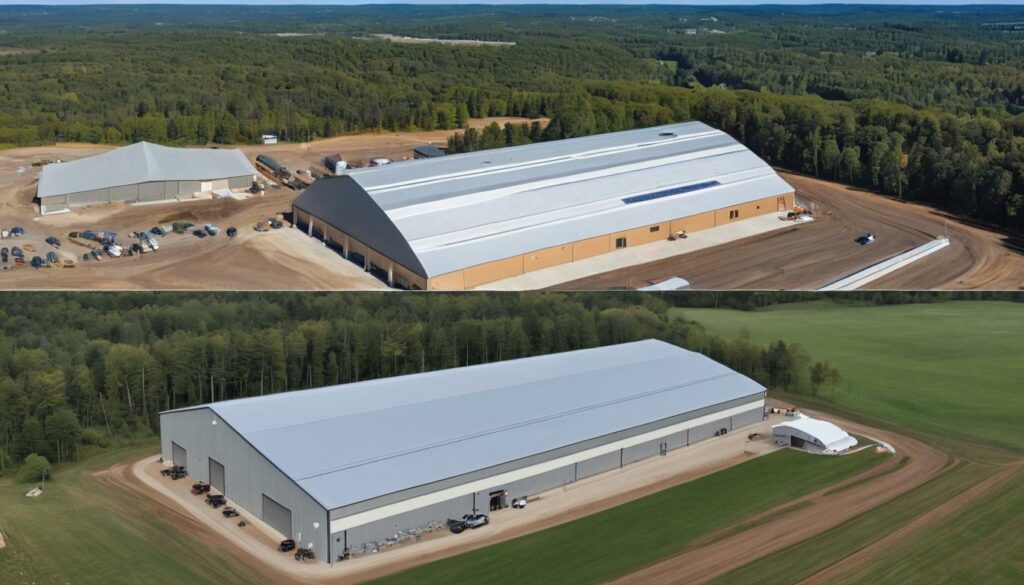
Metal Vs. Conventional Stick Frame: Comprehensive Comparison
Choosing a building structure is a crucial decision, whether it’s for a home, a place of business, or any other type of facility. Ensuring that the building is durable, cost-efficient, and aligns with personal design preferences is essential. To make an informed choice, let’s explore the essential aspects that differentiate metal buildings from conventional stick frame structures.
Durability and Resilience
Metal buildings offer significant advantages in durability due to the robust nature of steel. Steel is inherently resistant to numerous forms of damage such as mold, mildew, and is non-combustible. On the other hand, conventional stick frame buildings are more prone to damage from moisture, termites, and fire due to their wooden framework.
Construction Cost and Customization
Metal buildings have an edge over stick frame buildings in construction costs due to efficient manufacturing processes and quick assembly times. Additionally, metal building designs can be customized without incurring substantial expenses. In contrast, conventional stick frame buildings often require more time and labor for construction, leading to higher overall costs.
Consider the case of a business owner looking to expand their operations. A metal building could be custom-designed and erected within a shorter timeframe compared to a traditional stick frame structure. The reduced construction time not only translates to cost savings but also allows the business to start operations sooner.
In terms of design flexibility and practicality, metal buildings offer numerous advantages such as expansive clear spans and adaptable layouts that cater to diverse commercial and industrial needs. This level of flexibility isn’t always achievable with conventional stick frame buildings due to limitations associated with load-bearing walls and columns.
With these initial comparisons in mind, it’s evident that metal buildings stand out in several crucial areas such as durability, construction cost, design flexibility, and customization options. However, the analysis goes beyond these fundamental aspects as we delve deeper into energy efficiency considerations, material availability, and dispelling common misconceptions surrounding metal buildings versus traditional construction methods.
Now transitioning from the structural comparison between metal buildings and conventional stick frame structures, let’s shift our focus toward evaluating the durability and elemental resistance features of metal buildings.
Durability and Elemental Resistance
When comparing durability, metal buildings outshine conventional stick frame buildings. These structures are designed to endure the challenges posed by different elements, including fire, pests, and extreme weather conditions. The innate strength of metal makes it an ideal option for those seeking long-lasting resilience in their building construction.
Let’s begin with the threat of fire. Metal buildings have a significant advantage here. Unlike wood, steel does not contribute to the spread of fire. This fire resistance is a critical safety feature reflected in the class A fire rating that metal buildings typically receive. In contrast, conventional stick frame buildings are more vulnerable to fire damage due to the combustible nature of wood.
Another essential point is the protection against pests like termites and degradation from mold. Metal buildings, with their steel framework, provide a formidable barrier against these threats. Conversely, traditional wood frames are susceptible to pest infestations and can be subject to decay caused by mold and moisture over time.
Extreme weather conditions can pose serious challenges to building structures. Metal buildings hold a significant edge in this aspect as well. They offer superior wind resistance, often rated to withstand winds of up to 150 mph, compared to the typical wind resistance of conventional stick frame buildings, which is around 90 mph. This higher level of protection makes metal buildings a preferred choice for areas prone to severe weather events.
Furthermore, the ability of metal buildings to resist elemental wear and tear extends their lifespan significantly when compared to traditional wood-framed structures. The average lifespan of metal buildings ranges between 40-60 years, which exceeds that of conventional stick frame buildings with an average lifespan of 20-30 years.
In summary, the unparalleled durability and elemental resistance offered by metal buildings make them a compelling choice for those who prioritize longevity, safety, and protection from environmental factors.
Construction Cost and Economic Value
When it comes to building structures, cost is often a critical factor for many individuals and businesses. In this regard, metal buildings have notable advantages over conventional stick frame buildings in terms of construction cost and economic value.
The efficiency and speed of constructing metal buildings contribute to reduced labor costs and overall project expenses. Unlike conventional stick frame buildings that require extensive on-site construction work, metal buildings commonly arrive as pre-engineered building kits. This means that much of the construction work can be completed off-site at a factory, saving time and reducing labor costs during on-site assembly. This streamlined construction process not only cuts down on labor expenses but also minimizes the duration of the entire building project.
Moreover, the materials used in metal buildings are often more cost-effective than those required for traditional stick frame construction. The steel frames used in metal buildings are durable, widely available, and can be recycled. This recyclability not only reduces material costs but also contributes to environmental sustainability, making it a financially prudent choice in the long run.
It’s important to note that while metal buildings may have a higher initial cost compared to stick frame buildings, their longevity and minimal maintenance requirements provide long-term economic value. For instance, investing around 15% more in a steel structure can result in long-term savings through reduced maintenance expenses and lower insurance premiums of 30% or more, making metal buildings an economically viable option, especially for those looking for a durable and cost-effective building solution.
In summary, the efficiency of construction, shorter build time, reduced labor costs, and overall project expenses make metal buildings a financially prudent choice. The long-term economic value stemming from their durability, minimal maintenance requirements, and potential insurance premium savings further solidify their position as a smart investment for various applications ranging from commercial to residential purposes.
As we pivot our focus to other essential considerations in building infrastructure, let’s now explore the aspects of design flexibility and energy efficiency in these structural choices.
Design Flexibility and Energy Efficiency
Metal buildings have evolved significantly in terms of aesthetics and design flexibility. They are no longer limited to industrial looks; instead, they can seamlessly emulate the appearance of traditional structures. This means that if you desire the classic look of a building with bricks, metal buildings can accommodate that by incorporating brick veneers. They also offer a wide range of siding materials, providing architectural versatility that wasn’t always possible with metal construction.
What’s important to remember is that while metal buildings can provide the visual appeal of traditional structures, they also bring added benefits of being durable, resilient, and easier to maintain compared to conventional stick frame buildings. Metal buildings offer an extensive variety of architectural options and finishes, allowing for personalized appearances that align with individual preferences and the ambiance of the surrounding environment.
Energy Efficiency in Metal Buildings
In addition to design flexibility, metal buildings are making significant strides in energy efficiency. Innovative insulation solutions, such as spray foam insulation, help minimize thermal leakage and enhance overall energy performance. This results in a more sustainable and eco-friendly building design that reduces energy consumption and lowers long-term operational costs.
Consider this – metal building roofs can be fitted with cool-coated finishes designed to reflect sunlight and reduce heat absorption, subsequently decreasing indoor cooling requirements. These energy-efficient features not only contribute to cost savings but also align with environmental sustainability efforts.
Unlike conventional stick frame buildings, where insulation may be compromised due to thermal breaks and suboptimal material choices, metal building designs prioritize superior insulation properties that result in enhanced energy efficiency.
Moreover, the use of highly efficient HVAC systems further complements the energy-saving capabilities of metal buildings. The incorporation of natural ventilation elements enhances indoor air quality while reducing the dependency on mechanical cooling systems, amplifying sustainability efforts within the building infrastructure.
The advancements in design technology have transformed the landscape for metal buildings. From enhancing aesthetic appeal through versatile design options to integrating innovative energy-efficient features, metal buildings continue to evolve as a compelling choice for sustainable and visually appealing construction.
Material Availability and Construction Time
When considering a construction project, one of the crucial elements to account for is the availability of materials and the time it takes to bring the structure to life. Metal buildings possess a distinct advantage in this regard, thanks to the ease of sourcing materials and the streamlined construction process that significantly reduces project timelines.
The readily available materials for metal buildings, such as steel beams and panels, contribute to faster project execution as compared to traditional stick frame buildings. The manufacturing process of metal components is often highly efficient, leading to an ample supply of standardized materials that can be quickly accessed for construction projects.
For instance, when planning a project with a tight timeline, building with metal allows for a quicker start-to-finish schedule due to the simplicity of erecting pre-engineered metal components. This stands in contrast to stick frame constructions that may require longer wait times for custom-cut lumber and other specialized materials.
Additionally, the unique structural requirements for each construction method play a significant role in determining the time it takes to build. Metal buildings with square footings necessitate less construction time and cost compared to the labor-intensive process of creating concrete foundation walls typically used in stick framing.
This distinction results in reduced construction time and expenses, rendering metal buildings as an attractive choice for minimizing operational downtime or achieving swift occupancy. Whether it’s for industrial warehouses, commercial facilities, or agricultural structures, the accelerated construction timeline offered by metal buildings is a significant advantage for meeting urgent operational needs or adhering to strict project schedules.
The streamlined nature of material availability and construction time demonstrates how metal buildings offer a practical solution for various applications, ensuring quicker occupancy and operational readiness while minimizing costs associated with extended construction timelines.
Customization Options: Metal Vs. Traditional Frame
When it comes to creating a building that suits specific needs and design preferences, the ability to customize is crucial. Metal buildings offer a remarkable array of customization options, making them an attractive choice for those seeking architectural diversity, unique interior layouts, and specialized functional adaptations.
Metal buildings are incredibly versatile, adapting to fulfill a wide range of construction requirements. Whether envisioning a spacious warehouse, a stylish office complex, or a cozy community center, metal buildings can accommodate diverse architectural designs without compromising structural integrity. This level of adaptability allows for creative freedom in realizing buildings that reflect specific aesthetic preferences while meeting functional needs.
Architectural Designs
The flexibility of metal buildings extends to architectural designs, enabling architects to explore innovative concepts and push the boundaries of conventional building styles. This means that you’re not limited to the standard boxy shape often associated with metal structures; instead, you can embrace curvilinear forms, bold angles, and distinctive façades.
For instance, a community gathering space could feature sweeping curved walls and soaring ceilings, creating a visually striking venue that exudes modern elegance.
Interior Layouts
Metal buildings provide an equally impressive degree of freedom when it comes to interior layouts. The absence of load-bearing walls within the structure allows for open floor plans and adaptable spaces, catering to evolving operational needs or varied functions.
Imagine an industrial facility with a flexible layout that easily accommodates changing production processes.
Functional Adaptations
Moreover, metal buildings can be tailored to meet specific functional requirements. From extensive storage capacities in warehouses to specialized work areas in manufacturing facilities, the inherent strength and design flexibility of metal frames support customized solutions for various operational demands.
A tech company may require a building layout that integrates collaborative workspaces, private offices, and recreational areas—all seamlessly housed within a single structure.
On the other hand, while traditional frame buildings do offer some degree of customization, they may be limited in terms of structural modifications and architectural possibilities. The rigid nature of conventional construction methods can present challenges when attempting to realize intricate designs or unique spatial arrangements.
As we delve further into examining the practical usage and overall quality of each building type…
Overall Quality and Practical Usage of Each Building Type
When it comes to construction, the overall quality and practical usage of a building are critical factors that can impact its longevity, functionality, and efficiency. Let’s start by examining structural integrity.
Structural integrity refers to the ability of a building to withstand various forces such as wind, snow loads, and seismic activity. Metal buildings are known for their exceptional structural integrity due to the strength of steel. Steel is inherently strong, providing a reliable framework for metal buildings. This structural reliability offers peace of mind to property owners, knowing that their buildings are built to last.
On the other hand, traditional stick frame buildings rely on wood framing which may be susceptible to rot, pests, and warping over time. While wood has been a popular building material for centuries, it requires more maintenance compared to steel. Therefore, when comparing structural integrity, metal buildings often outshine their traditional counterparts.
Next, let’s consider energy efficiency.
Energy efficiency is a crucial factor in today’s construction industry, with a focus on reducing environmental impact and operational costs. Metal buildings are designed with energy efficiency in mind by utilizing advanced insulation systems and reflective roofing materials. These features help regulate indoor temperatures and reduce the need for excessive heating or cooling, resulting in lower energy consumption.
In contrast, traditional stick frame buildings may have more thermal breaks due to the use of wooden studs and rafters, interrupting insulation and decreasing energy efficiency. This translates to higher heating and cooling costs over time. The inherent properties of steel make metal buildings a sustainable choice for those seeking energy-efficient construction solutions.
Maintenance is another significant consideration when evaluating the quality and practical usage of metal vs. traditional frame buildings.
Metal buildings require minimal maintenance due to the durability of steel and protective coatings that resist corrosion. This results in cost savings over the lifespan of the building as there is less need for frequent repairs or replacements of structural components.
In contrast, wood-based structures may require regular inspection for termite infestations, moisture damage, and rot. The ongoing maintenance needs associated with traditional stick frame buildings can lead to increased expenses and potential disruptions to the building’s functionality.
Finally, let’s touch on adaptability.
Adaptability refers to the flexibility of a building to accommodate changing needs or modifications over time. Metal buildings offer exceptional adaptability as they can be easily reconfigured or expanded to meet evolving requirements without compromising structural integrity. This makes them particularly suitable for commercial, industrial, agricultural, and residential applications where functional versatility is essential.
Traditional stick frame buildings may face limitations in adaptability due to structural constraints associated with load-bearing walls and support systems. Retrofitting or altering these structures can be more challenging and costly compared to modifying metal buildings.
A Detailed Comparison – Metal Buildings vs Conventional Stick Frame Buildings
In conclusion, understanding the practical advantages of each building type—from structural integrity and energy efficiency to maintenance and adaptability—is crucial in making an informed decision for specific construction projects. Metal buildings exhibit consistent quality, high performance, and functional versatility that cater to diverse needs across various industries. When considering a construction project, it’s important to weigh the benefits of each building type carefully. If you’re considering metal buildings for your next project, contact us at 865-316-9009 for expert guidance and support. Also if you like our content and want to stay up to date, follow us on Facebook at https://www.facebook.com/roimetalbuildings!
